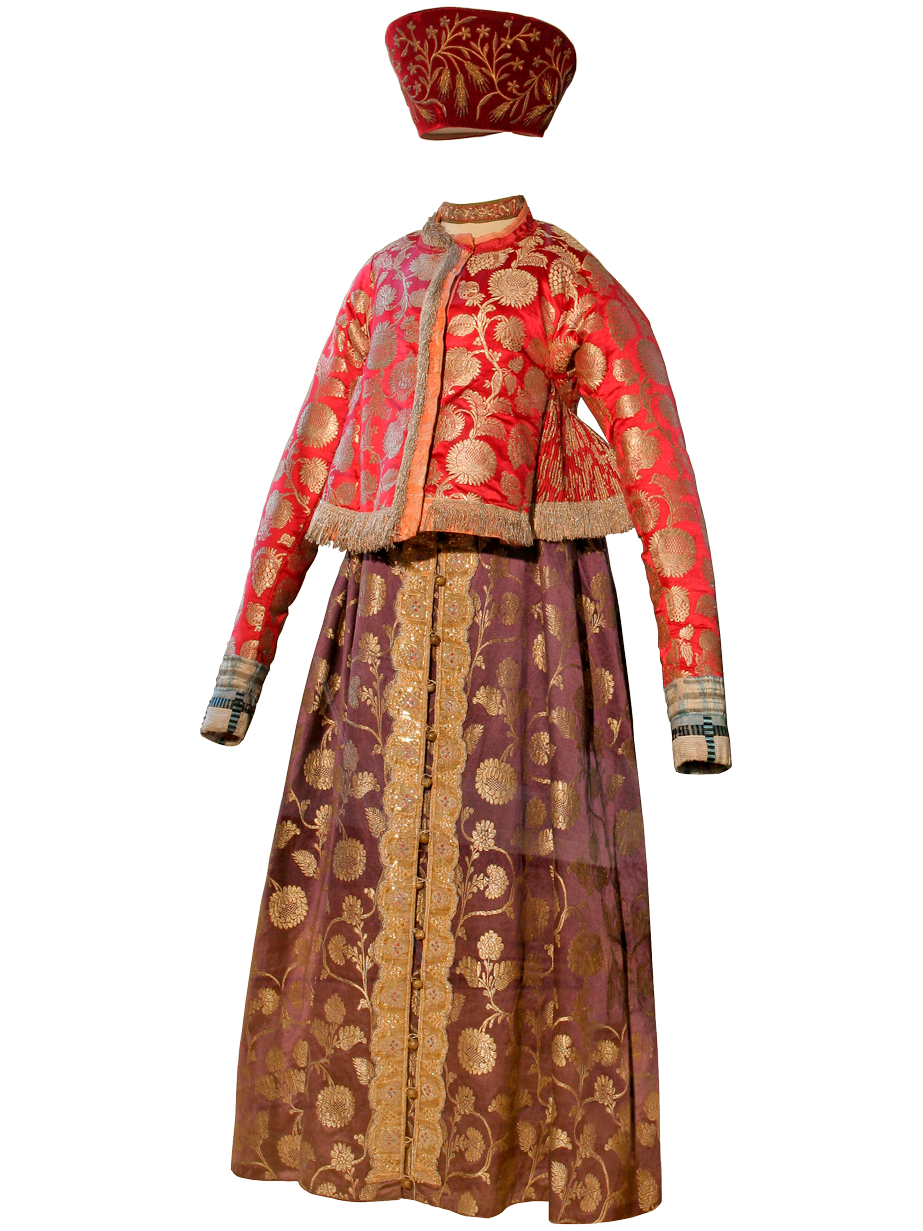WOMAN'S FESTIVE COSTUME: DRESS, DUSHEGREYA, KOKOSHNIK

Such kokoshniks (high headdress) were called "muscowit", although they were common in other provinces. Their ancient from was determined by the shape of the band widening upwards and higher in the front and a flat rounded crown. The main decoration of such kokoshniks was rich golden embroidery of herbs and especially a variety of flowers. They became a prototype of a headdress to a uniform court dress the so-called "Russian dress".
In cities up to the XVIII Century clothing of Russian women was set with a sundress. According to Peter's decrees boyar and noble class switch to "German dress", but traditional clothing was preserved within merchant and townspeople society. The term "sarafan" first mentioned in Russian written sources of the XIV century. (Nikon chronicles of 1376). "Sarafan", "sarafanetz" was called not only women's but also men's clothing of caftan (coat) cut, known to be outfit of Princes and boyars in the XVI – XVII Centuries. Presumably the word "Sarafan" comes from the Iranian "sarap", which means – "from head to toe". Sarapa in the Orient was a very honorable dress.
Women's outerwear the so called dushegreyka (soulwarmer) with sleeves (shugay, fur coat, padded jacket) and sewn in back and folds, was known since the XVI – XVII Centuries and was widespread among the peasants of the Northern and Central provinces. This type of clothing among the merchant and townspeople was worn eve n in the XVIII-XIX Centuries.
The main difference between Russian traditional urban clothing from peasant’s was the fabrics that were used for sewing of shirts; “sarafans” (sundresses), etc. For clothing merchants and rich townspeople mainly used expensive purchased fabrics. In the beginning of the XVIII Century in silk making industry appears and is being developed in Russia. The decor of the Russian silk fabrics of the XVIII Century definitely followed tendencies typical for European art, but in the second half of the XVIII Century was started production of fabrics with great influence of folk art in the ornamental style. There were large floral image in bright and contrasting colors.
Merchant and rich peasant women sewed festive clothes from thick silk fabrics - Satin, gros de Tours, brocade and Stoff. Colorful expensive clothes were cherished and passed on by inheritance.
Many manufactures kept on producing fabrics popular among the people for decades and since the tastes of people were steady and fabrics with patterns fashionable in the middle of the XVIII Century, would have been successfully sold out at the end of the century as well.
